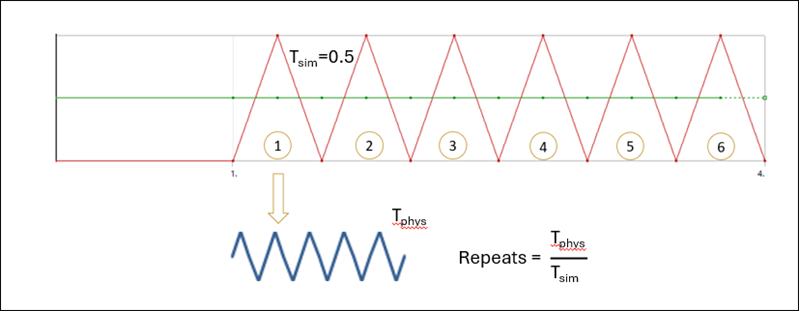In the experimental set up of Jin and Mall [2], two types of indenters are made to oscillate over an axially loaded slab. The cylinder-on-flat configuration is the one investigated here for the fretting fatigue damage calculation. A cylinder on a flat slab is represented by a 2-D plain strain model, as in the companion numerical paper. A portion of the experimental setup is shown in Figure 64.1: Cylindrical Indenter Oscillating Over Flat Slab.
First, the cylindrical indenter is pressed against the slab having an out-of-plane thickness of 6.4 mm at C with a force per unit length of Fy = - 1334/6.4. Then, an oscillatory displacement is applied (D) with five different amplitudes: 0.000, 0.073, 0.147, 0.184 and 0.220 mm. The bottom of the slab (A) is fixed in the X direction. The side of the slab (B) is fixed in the Y direction. At side E, an oscillating pressure is applied with a frequency of 2 Hz, and a minimum and maximum of 16.5 and 550 MPa, respectfully. The oscillating displacement at D and pressure at E are in the same phase shown in Figure 64.2: Prescribed displacement, Ux at D and pressure at E.
The zoom-in view of the first simulation cycle is shown to illustrate corresponding physical cycles. The wear rate is assumed to be constant, and for the physical time, simulation time is scaled with the same scaling factor as wear at each sub-step.
The problem is simulated for six oscillating cycles to calculate the fretting fatigue damage with wear. The fretting fatigue life is estimated for the cylindrical pad with 5 different cases (one compressive load and 5 sliding strokes) with and without wear modeling.





